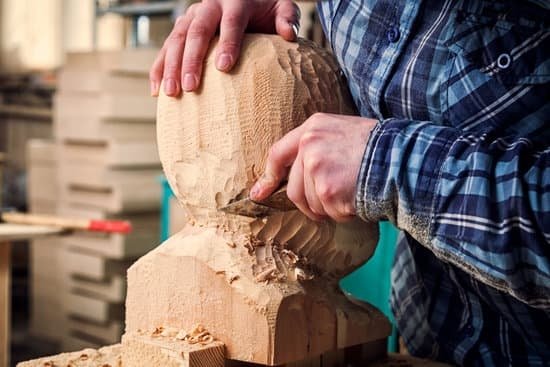Do your woodworking like a carpenter and explore the art of crafting with wood. Whether you are just starting out or looking to improve your skills, understanding the essentials of carpentry is crucial for creating professional-quality projects. In this article, we will delve into the world of woodworking, from mastering basic techniques to selecting the right materials and finishing touches.
Woodworking is a timeless craft that has been practiced for centuries, and mastering the art of carpentry can open up a world of creativity and possibilities. From building furniture to crafting intricate designs, woodworking allows individuals to bring their ideas to life using one of nature’s most versatile materials. By learning the fundamental tools and techniques used by carpenters, you can elevate your woodworking skills and take pride in creating beautiful and functional pieces.
In the following sections, we will explore the essential tools used by carpenters, delve into mastering basic techniques, emphasize the importance of precision and accuracy in cutting and measuring, provide tips for selecting the right wood for your projects, share tricks for achieving professional finishes, discuss various joinery techniques, and stress the importance of safety measures in woodworking.
Whether you are a hobbyist or aspiring professional woodworker, this comprehensive guide will help you embrace the craftsmanship and artistry of woodworking like a true carpenter.
The Essential Tools of a Carpenter
Woodworking, like many other crafts, requires a set of essential tools to get the job done right. Whether you are a seasoned carpenter or just starting out in woodworking, having the right tools is crucial in achieving professional results. Here is a detailed look at the must-have tools for woodworking like a pro.
Hand Tools
The foundation of any woodworking project lies in the use of hand tools. A carpenter’s toolbox is incomplete without essential hand tools such as chisels, hand saws, planes, and clamps. These tools allow for precision and control when shaping and manipulating wood.
Power Tools
For more efficient and precise woodworking, power tools are indispensable. Power saws, drills, sanders, and routers are some of the most commonly used power tools in carpentry. Each tool serves a specific purpose in cutting, drilling, shaping, and smoothing wood with accuracy and speed.
Measuring and Marking Tools
Accurate measuring and marking are key aspects of carpentry. Carpenters rely on tools such as tape measures, squares, rulers, marking gauges, and compasses to ensure that their cuts and joints are precise. Without these measuring and marking tools, achieving precision in woodworking would be nearly impossible.
Mastering the Basics
Tools of the Trade
To do your woodworking like a carpenter, it’s essential to have a good understanding of the tools required for the job. A few basic tools that every woodworker should have in their arsenal include chisels, hand saws, power drills, and measuring tape. These tools are fundamental for any woodworking project and can help you achieve precise and accurate cuts.
Understanding Joinery Techniques
Joinery is a critical component of woodworking and refers to the methods used to connect pieces of wood together. The most common joinery techniques include dovetail joints, mortise and tenon joints, and biscuit joints. By mastering these techniques, you can ensure that your woodworking projects are strong, durable, and visually appealing.
The Art of Shaping Wood
Shaping wood is another fundamental skill in carpentry. Whether it’s creating smooth edges on a piece of furniture or carving intricate designs, knowing how to effectively shape wood is essential for any woodworker. Techniques such as planing, sanding, and carving are crucial for achieving the desired finish on your woodworking projects.
By mastering these basics of carpentry and woodworking techniques, you’ll be well on your way to honing your skills as a woodworker. Remember to always practice precision and accuracy in your work, select the right type of wood for each project, and embrace safety measures at all times. Embracing these fundamentals will allow you to do your woodworking like a true carpenter.
Precision and Accuracy
When it comes to woodworking, precision and accuracy are crucial for achieving high-quality results. Whether you are building furniture, cabinets, or other wooden structures, the way you measure and cut your wood can make a significant difference in the final product. To do your woodworking like a carpenter, it is essential to pay close attention to detail and ensure that your measurements and cuts are precise.
One of the most important tools for achieving precision in carpentry is a reliable measuring tape or ruler. Taking accurate measurements before making any cuts is vital for ensuring that all the pieces fit together perfectly. Additionally, using marking tools such as pencils or marking knives can help you make clear and accurate lines on the wood for cutting.
In addition to accurate measurements, using the right cutting tools is essential for achieving precision in carpentry. A sharp handsaw or power saw can make clean and precise cuts, while a miter saw or table saw can help you achieve accurate angles and dimensions. Taking the time to set up your cutting tools properly and double-checking your measurements before making any cuts will help ensure that your woodworking projects turn out just as you envisioned.
Accurate Use of Marking Tools
Sharp Handsaw or Power Saw
Miter Saw or Table Saw
These are all important aspects of ensuring accuracy in carpentry work like a true professional. By prioritizing precision and taking the time to measure and cut with care, you can elevate your woodworking projects to new levels of craftsmanship.
Selecting the Right Wood
When it comes to woodworking, selecting the right wood is crucial for the success of your projects. As a carpenter, understanding the different types of wood and their characteristics is essential in achieving high-quality results. Whether you are building furniture, cabinets, or decorative items, choosing the best wood will impact the overall look, strength, and durability of your creations.
One important factor to consider when selecting wood for your woodworking projects is the wood’s hardness and density. Hardwood such as oak, maple, and cherry are known for their durability and ability to withstand wear and tear.
On the other hand, softwoods like pine and cedar are easier to work with and are often used for interior projects. Understanding the hardness scale of different woods will help you make informed decisions when choosing the right wood for your specific project needs.
In addition to hardness, it’s important to consider the color, grain pattern, and texture of the wood. Some woods feature intricate grain patterns that add character and beauty to a piece, while others have a more uniform appearance.
Considering these aesthetic qualities will allow you to choose a wood that complements your design vision. By taking the time to select the right wood for each project, you can ensure that your woodworking reflects the craftsmanship and attention to detail of a skilled carpenter.
Finishing Touches
Whether you are a seasoned carpenter or just starting out in the world of woodworking, achieving a professional finish on your projects is essential for creating high-quality and visually appealing pieces. By paying attention to the finishing touches, you can elevate the overall look of your creations and make them stand out. Here are some tips and tricks to help you achieve a professional finish on your woodworking projects:
- Sanding: Proper sanding is crucial for achieving a smooth and flawless finish on your woodwork. Start with coarse-grit sandpaper to remove any rough patches or imperfections, then gradually work your way up to finer grits for a polished look.
- Staining and Finishing: Selecting the right stain and finish can significantly impact the appearance of your woodworking projects. Experiment with different types of stains to find the perfect hue, and apply multiple coats of finish for added durability and sheen.
- Sealants: Using sealants such as varnish or polyurethane can protect your woodwork from moisture, scratches, and general wear and tear. Apply sealant evenly and allow sufficient drying time between coats for best results.
When working on your woodworking projects, remember that attention to detail is key when it comes to achieving a professional finish. Take your time to finesse each step of the process, from sanding to staining, and pay close attention to the little details that can make a big difference in the final outcome. By following these tips and tricks, you can ensure that your woodworking projects exude the craftsmanship and artistry of a true carpenter.
Additionally, don’t underestimate the power of practice when it comes to honing your finishing techniques. The more you do your woodworking like a carpenter – focusing on precision, attention to detail, and quality materials – the more refined your skills will become. Embrace each project as an opportunity to improve and perfect your craft, and soon enough, you’ll be producing stunning woodwork with professional-level finishes.
Joinery Techniques
In order to do your woodworking like a carpenter, it is crucial to have a good understanding of joinery techniques. Joinery refers to the methods used to connect different pieces of wood together to create strong and durable constructions. There are several common joinery techniques that carpenters use, each with its own unique advantages and applications.
One popular joinery technique is the dovetail joint, known for its strength and resistance to being pulled apart. This type of joint is often used in furniture making, cabinet construction, and other woodworking projects where durability is essential.
Another common method is the mortise and tenon joint, which involves inserting a protruding tenon on one piece of wood into a precut hole or mortise on another piece. This technique is valued for its stability and is often used in building structures such as doors, windows, and tables.
Additionally, the biscuit joint technique involves using small wooden biscuits inserted into matching slots in two pieces of wood to create a strong connection. This method is especially useful for joining boards together to form larger panels or tabletops. By mastering these and other joinery techniques, you can ensure that your woodworking projects are not only visually appealing but also built to last.
| Joinery Technique | Advantages |
|---|---|
| Dovetail Joint | Strength and resistance to being pulled apart |
| Mortise and Tenon Joint | Stability for building structures |
| Biscuit Joint | Creating strong connections for panels or tabletops |
Safety First
Woodworking is a fulfilling and rewarding practice that allows individuals to express their creativity and craftsmanship through the manipulation of wood. However, it is important to prioritize safety when engaging in this art form. Carpentry, in particular, emphasizes the importance of adhering to safety measures to prevent accidents and injuries in the workshop. Here are some essential safety practices to consider when doing your woodworking like a carpenter:
Safety Equipment
When doing your woodworking like a carpenter, it is crucial to invest in high-quality safety equipment to protect yourself from potential hazards. This includes wearing protective goggles to shield your eyes from flying debris, using ear protection to reduce the noise level from power tools, and donning a dust mask or respirator to avoid inhaling harmful sawdust particles.
Workshop Organization
Maintaining a clean and organized workspace is key to preventing accidents while woodworking. Keep your tools neatly stored and ensure that walkways are free of clutter. Additionally, always have a fire extinguisher readily available in case of emergencies.
Proper Tool Usage
Using tools correctly is vital for ensuring the safety of both yourself and others in the workshop. Always read and follow the manufacturer’s instructions for each tool, and never remove safety guards or operate machinery without proper training. It is also important to keep cutting tools sharp as dull blades can lead to slips and mishaps.
By implementing these safety measures into your woodworking practice, you can enjoy the craft without compromising your well-being. Remember that prioritizing safety not only protects you but also enhances the quality of your work as a skilled woodworker.
Conclusion
In conclusion, embracing the craftsmanship and artistry of woodworking like a true carpenter is not just about acquiring the right tools and techniques. It’s about having a deep respect for the material and the process, understanding that every piece of wood has its own unique characteristics and potential. It’s about approaching each project with patience, precision, and a genuine passion for creating something beautiful and functional with your own hands.
Taking the time to master the basics of carpentry, understanding joinery techniques, selecting the right wood, and practicing safety measures are all essential components of doing your woodworking like a carpenter. But it is also about honing your skills through practice, learning from your mistakes, and constantly seeking new knowledge and inspiration. The journey of becoming a skilled woodworker is one that requires dedication and a willingness to always strive for improvement.
So as you embark on your woodworking journey, remember to approach each project with a sense of reverence for the craft. Pay attention to detail, take pride in your workmanship, and don’t be afraid to experiment and push your creative boundaries. By doing your woodworking like a carpenter – with patience, precision, and an unwavering commitment to quality – you can truly elevate your projects to a level that reflects the true artistry of woodworking.

Hi everyone! I’m a woodworker and blogger, and this is my woodworking blog. In my blog, I share tips and tricks for woodworkers of all skill levels, as well as project ideas that you can try yourself.





